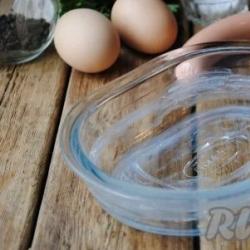Why does the resistance of semiconductors decrease with increasing temperature? Temperature dependence of the resistance of semiconductors and metals. Impurities and defects in semiconductors
In semiconductors, electrical conductivity depends significantly on temperature. At temperatures close to absolute zero, they turn into insulators, and at high temperatures their conductivity becomes significant. Unlike metals, the number of conduction electrons in semiconductors is not equal to the number of valence electrons, but constitutes only a small part of it. The sharp dependence of the conductivity of semiconductors on temperature indicates that conduction electrons appear in them under the influence of thermal motion.
7.Formulate and write down Brewster’s law. Explain your answer with a drawing.
If the tangent of the angle of incidence of the beam on the interface between two dielectrics is equal to the relative refractive index, then the reflected beam is completely polarized in a plane perpendicular to the plane of incidence, that is, parallel to the interface between the media
tg a B = n 21.
Here a B is the angle of incidence of light, called the Brewster angle, n 21 is the relative refractive index of the second medium relative to the first
8. What is the essence of Heisenberg's uncertainty relations?
x* p x >=h
y* p y >=h
z* p z >=h
E* t>=h
Δx, y, z - inaccuracy in determining the coordinate
Δp – inaccuracy in determining the impulse
Phys. meaning: it is impossible to accurately measure position and momentum at the same time.
9. How will the frequency of free oscillations in the oscillatory circuit change if the inductance of the coil is increased by 4 times and the electrical capacity of the capacitor is reduced by 2 times?
Answer: will decrease by half
10. Indicate the product of the nuclear reaction Li+ H He+?
11.What is the inductive reactance of a coil with an inductance of 2 mH at a current oscillation frequency of n = 50 Hz?
R L =wL=2πνL=0.628 (Ohm). Answer: R L =0.628 (Ohm)
If the absolute refractive index of a medium is 1.5, then what is the speed of light in this medium?
n= c/v 2*10 8
13. Wavelength of gamma radiation is nm. What potential difference U must be applied to the X-ray tube to produce X-rays with this wavelength?
14. The de Broglie wavelength for a particle is 2.2 nm. Find the mass of the particle if it moves with speed .
m= = 6, 62*10 -34 /2, 2*10 -9 *10 5 =3, 01*10 -30 ;
As a result of photon scattering by a free electron, the Compton shift turned out to be equal to 1.2 pm. Find the scattering angle.
16. The oscillatory circuit contains a capacitor with an electrical capacity of 50nF and an inductance coil of 5/(4) μH. Determine the wavelength of the radiation
17. The work function of an electron leaving platinum is . What is the maximum kinetic energy of photoelectrons ejected from platinum by light with a wavelength of 0.5 microns?
![]()
18. The distance between the lines of the diffraction grating is d = 4 µm. Light with a wavelength of = 0.6 µm. What is the maximum order of magnitude given by this lattice?
d=4μm, , dsinj = nl, sinj=1,n= =
Poppy. order - 6
19. What is the half light absorption layer d 1/2, if when light passes through a 30 mm layer of substance, the light intensity decreases 8 times? , , , , , , ![]() ,
,
20. In Young’s experiment, the holes were illuminated with monochromatic light of wavelength = 6 10 -5 cm, the distance between the holes is 1 mm and the distance from the holes to the screen is 3 m. Find the position of the first light stripe .
Option 18
1. A magnetic field is called uniform if... the magnetic induction vector is the same at all points. example (permanent magnet)
2. What oscillations are called forced?
Forced oscillations are oscillations that occur in any system under the influence of a variable external influence. The nature of forced oscillations is determined both by the properties of the external influence and by the properties of the system itself.
3.What is called the external photoelectric effect?
The external photoelectric effect is the ejection of electrons from a substance under the influence of electromagnetic radiation. External photoelectric effect is observed mainly in conductors
4. What is called a perfect black body?
A body capable of completely absorbing at any temperature all radiation of any frequency incident on it is called black. Consequently, the spectral absorption capacity of a black body for all frequencies and temperatures is identically equal to unity ()
5. Formulate and write Lambert’s law
The Bouguer-Lambert-Beer law is a physical law that determines the attenuation of a parallel monochromatic beam of light as it propagates in an absorbing medium.
where is the intensity of the incoming beam, l is the thickness of the layer of substance through which the light passes, is the absorption index
What are its features? What is the physics of semiconductors? How are they built? What is conductivity of semiconductors? What physical characteristics do they have?
What are semiconductors called?
This refers to crystalline materials that do not conduct electricity as well as metals do. But still this indicator is better than that of insulators. Such characteristics are due to the number of moving carriers. Generally speaking, there is a strong attachment to cores. But when several atoms, say antimony, which has an excess of electrons, are introduced into the conductor, this situation will be corrected. When indium is used, elements with a positive charge are obtained. All these properties are widely used in transistors - special devices that can amplify, block or pass current in only one direction. If we consider an NPN-type element, we can note a significant amplifying role, which is especially important when transmitting weak signals.
Design features of electrical semiconductors
Conductors have many free electrons. Insulators practically do not have them at all. Semiconductors contain both a certain number of free electrons and gaps with a positive charge that are ready to accept released particles. And most importantly, they all conduct. The type of NPN transistor discussed earlier is not the only possible semiconductor element. So, there are also PNP transistors, as well as diodes.
If we talk about the latter briefly, then this is an element that can transmit signals only in one direction. A diode can also turn alternating current into direct current. What is the mechanism of this transformation? And why does it only move in one direction? Depending on where the current comes from, electrons and gaps can either diverge or go towards each other. In the first case, due to an increase in distance, the supply supply is interrupted, and therefore negative voltage carriers are transmitted in only one direction, that is, the conductivity of semiconductors is one-way. After all, current can be transmitted only if the constituent particles are nearby. And this is only possible when current is supplied from one side. These are the types of semiconductors that exist and are currently in use.
Zone structure

The electrical and optical properties of conductors are due to the fact that when energy levels are filled with electrons, they are separated from possible states by a band gap. What are its features? The fact is that there are no energy levels in the band gap. This can be changed with the help of impurities and structural defects. The highest completely filled band is called the valence band. This is followed by one that is allowed, but empty. It is called the conduction band. Semiconductor physics is a rather interesting topic, and it will be well covered within the framework of the article.
State of electrons

For this, concepts such as the number of the allowed zone and quasi-pulse are used. The structure of the first is determined by the dispersion law. He says that it is influenced by the dependence of energy on quasi-momentum. Thus, if the valence band is completely filled with electrons (which carry charge in semiconductors), then they say that there are no elementary excitations in it. If for some reason there is no particle, then this means that a positively charged quasiparticle has appeared here - a gap or a hole. They are charge carriers in semiconductors in the valence band.
Degenerate zones
The valence band in a typical conductor is sixfold degenerate. This is without taking into account the spin-orbit interaction and only when the quasi-momentum is zero. Under the same condition, it can split into doubly and quadruple degenerate zones. The energy distance between them is called the spin-orbit splitting energy.
Impurities and defects in semiconductors

They can be electrically inactive or active. The use of the former makes it possible to obtain a positive or negative charge in semiconductors, which can be compensated by the appearance of a hole in the valence band or an electron in the conductive band. Inactive impurities are neutral, and they have a relatively weak effect on the electronic properties. Moreover, what can often matter is the valence of the atoms that take part in the charge transfer process and the structure
Depending on the type and amount of impurities, the ratio between the number of holes and electrons may also change. Therefore, semiconductor materials must always be carefully selected to obtain the desired result. This is preceded by a significant number of calculations, and subsequently experiments. The particles that most people call majority charge carriers are minority ones.
Dosed introduction of impurities into semiconductors makes it possible to obtain devices with the required properties. Defects in semiconductors can also be in an inactive or active electrical state. The important ones here are dislocation, interstitial atom and vacancy. Liquid and non-crystalline conductors react to impurities differently than crystalline ones. The lack of a rigid structure ultimately results in the displaced atom receiving a different valence. It will be different from the one with which he initially saturates his connections. It becomes unprofitable for the atom to give or gain an electron. In this case, it becomes inactive, and therefore impurity semiconductors have a high chance of failure. This leads to the fact that it is impossible to change the type of conductivity by doping and create, for example, a pn junction.
Some amorphous semiconductors can change their electronic properties when exposed to doping. But this applies to them to a much lesser extent than to crystalline ones. The sensitivity of amorphous elements to alloying can be increased through processing. Ultimately, I would like to note that thanks to long and hard work, impurity semiconductors are still represented by a number of results with good characteristics.
Statistics of electrons in a semiconductor
When the number of holes and electrons exists is determined solely by temperature, band structure parameters and the concentration of electrically active impurities. When the ratio is calculated, it is assumed that some of the particles will be in the conduction band (at the acceptor or donor level). Also taken into account is the fact that part may leave the valence territory, and gaps are formed there.
Electrical conductivity

In semiconductors, in addition to electrons, ions can also act as charge carriers. But their electrical conductivity is in most cases negligible. As an exception, only ionic superconductors can be cited. There are three main electron transfer mechanisms in semiconductors:
- Main zone. In this case, the electron begins to move due to a change in its energy within one allowed area.
- Jumping transfer over localized states.
- Polaronic.
Exciton
A hole and an electron can form a bound state. It is called a Wannier-Mott exciton. In this case, which corresponds to the absorption edge, decreases by the size of the coupling value. If sufficient, a significant number of excitons can be formed in semiconductors. As their concentration increases, condensation occurs and an electron-hole liquid is formed.
Semiconductor surface
These words denote several atomic layers that are located near the border of the device. Surface properties differ from volumetric ones. The presence of these layers breaks the translational symmetry of the crystal. This leads to so-called surface states and polaritons. Developing the theme of the latter, we should also talk about spin and vibrational waves. Due to its chemical activity, the surface is covered with a microscopic layer of foreign molecules or atoms that have been adsorbed from the environment. They determine the properties of those several atomic layers. Fortunately, the creation of ultra-high vacuum technology, in which semiconductor elements are created, makes it possible to obtain and maintain a clean surface for several hours, which has a positive effect on the quality of the resulting product.
Semiconductor. Temperature affects resistance
When the temperature of metals increases, their resistance also increases. With semiconductors, the opposite is true - under the same conditions, this parameter will decrease. The point here is that the electrical conductivity of any material (and this characteristic is inversely proportional to the resistance) depends on what current charge the carriers have, on the speed of their movement in the electric field and on their number in one unit volume of the material.
In semiconductor elements, as the temperature increases, the concentration of particles increases, due to which thermal conductivity increases and resistance decreases. You can check this if you have a simple set of young physicists and the necessary material - silicon or germanium, you can also take a semiconductor made from them. Increasing the temperature will reduce their resistance. To make sure of this, you need to stock up on measuring instruments that will allow you to see all the changes. This is in the general case. Let's look at a couple of private options.
Resistance and electrostatic ionization

This is due to the tunneling of electrons passing through a very narrow barrier that delivers approximately one-hundredth of a micrometer. It is located between the edges of energy zones. Its appearance is possible only when the energy zones are tilted, which occurs only under the influence of a strong electric field. When tunneling occurs (which is a quantum mechanical effect), electrons pass through a narrow potential barrier, and their energy does not change. This entails an increase in the concentration of charge carriers, in both bands: conductivity and valence. If the process of electrostatic ionization is developed, a tunnel breakdown of the semiconductor may occur. During this process, the resistance of the semiconductors will change. It is reversible, and as soon as the electric field is turned off, all processes will be restored.
Resistance and impact ionization
In this case, holes and electrons are accelerated as they travel through the mean free path under the influence of a strong electric field to values that promote ionization of the atoms and breaking of one of the covalent bonds (main atom or impurity). Impact ionization occurs like an avalanche, and charge carriers multiply in it like an avalanche. In this case, the newly created holes and electrons are accelerated by an electric current. The final result of the current value is multiplied by the impact ionization coefficient, which is equal to the number of electron-hole pairs that are formed by the charge carrier along one path segment. The development of this process ultimately leads to an avalanche breakdown of the semiconductor. The resistance of semiconductors also changes, but, as in the case of tunnel breakdown, it is reversible.
Application of semiconductors in practice

The particular importance of these elements should be noted in computer technology. We have almost no doubt that you would not be interested in the question of what semiconductors are if it were not for the desire to independently assemble an object using them. It is impossible to imagine the operation of modern refrigerators, televisions, and computer monitors without semiconductors. Advanced automotive developments cannot do without them. They are also used in aviation and space technology. Do you understand what semiconductors are and how important they are? Of course, we cannot say that these are the only irreplaceable elements for our civilization, but we should not underestimate them either.
The use of semiconductors in practice is also due to a number of factors, including the widespread availability of the materials from which they are made, the ease of processing and obtaining the desired result, and other technical features due to which the choice of scientists who developed electronic equipment was chosen by them.
Conclusion
We looked in detail at what semiconductors are and how they work. Their resistance is based on complex physical and chemical processes. And we can notify you that the facts described in the article will not fully understand what semiconductors are, for the simple reason that even science has not fully studied the features of their work. But we know their basic properties and characteristics, which allow us to use them in practice. Therefore, you can look for semiconductor materials and experiment with them yourself, being careful. Who knows, maybe there is a great explorer within you?!
IN In the case of an ideal crystal lattice, conduction electrons would not experience any resistance during their movement, and the electrical conductivity of metals would be infinitely large. However, the crystal lattice is never perfect. Violation of the strict periodicity of the lattice can be caused by the presence of impurities or vacancies, as well as thermal vibrations of the lattice. The scattering of electrons on impurity atoms and on vibrating ions leads to the appearance of electrical resistance of metals.
Experience shows that, to a first approximation, the resistance of metal conductors increases linearly with temperature according to the law:
R = Ro (1+α t), or R = Ro α T;
Ρ = ρ o (1+α t), or ρ = ρ o α T
Here t is the temperature on the Celsius scale, T is the absolute temperature, R 0 (ρ o) is the resistance (specific resistance) at zero temperature Celsius, α is the temperature coefficient of resistance.
For pure metals, temperature coefficient of resistance
α=0.004 K -1 . Figure 1a shows an approximate graph of the dependence of the resistance of metals on absolute temperature.

T 
Fig.1a Fig.1b
Unlike metals, in which the temperature dependence of electrical conductivity is determined by the mobility of electrons, as a result of which the resistance increases with increasing temperature, the main role in the conductivity of semiconductors is played by the thermal generation of free electrons and holes. Moreover, the concentrations of electrons Ne and holes Ng are the same for intrinsic (pure) semiconductors and quickly increase with increasing temperature (see Boltzmann distribution):

where E is the band gap, k is Boltzmann’s constant. Therefore, with increasing temperature, electrical conductivity  semiconductors quickly increases, and the resistance correspondingly quickly decreases in accordance with the formulas:
semiconductors quickly increases, and the resistance correspondingly quickly decreases in accordance with the formulas:

 and r = r o
and r = r o
 (3)
(3)
If we present the dependence ln on graph 1b  from
from  , then a straight line is obtained for intrinsic semiconductors. In the case of impurity semiconductors, the concentration of current carriers quickly reaches saturation. With increasing temperature, the intrinsic conductivity of semiconductors begins to affect itself to a large extent; at high temperatures, the conductivity will consist of intrinsic and impurity conductivity. At low temperatures, impurity conductivity predominates; at high temperatures, intrinsic conductivity predominates.
, then a straight line is obtained for intrinsic semiconductors. In the case of impurity semiconductors, the concentration of current carriers quickly reaches saturation. With increasing temperature, the intrinsic conductivity of semiconductors begins to affect itself to a large extent; at high temperatures, the conductivity will consist of intrinsic and impurity conductivity. At low temperatures, impurity conductivity predominates; at high temperatures, intrinsic conductivity predominates.
Impurity conductivity of semiconductors
Ideal crystals that do not contain any impurities are very rare. Impurities in semiconductor crystals can increase the number of electrons or holes. It was found that the introduction of one atom of antimony into a cubic centimeter of germanium or silicon leads to the appearance of one electron, and one atom of boron - to the appearance of one hole.
The appearance of electronic or hole conductivity when various impurities are introduced into an ideal crystal occurs as follows. Let us assume that in a silicon crystal one of the atoms is replaced by an antimony atom. Antimony has five electrons on its outer electron shell (group V of the periodic table). Four electrons form paired electronic bonds with the four nearest neighboring silicon atoms. The remaining fifth electron will move around the antimony atom in an orbit similar to the orbit of an electron in a hydrogen atom, but the force of its electrical attraction to the nucleus will decrease according to the dielectric constant of silicon. Therefore, to release the fifth electron, negligible energy is needed, equal to approximately 0.05 eV. A weakly bound electron can easily be torn away from an antimony atom under the influence of thermal vibrations of the lattice at low temperatures. Such a low ionization energy of an impurity atom means that at temperatures around -100°C, all impurity atoms in germanium and silicon are already ionized, and the released electrons participate in the process of electrical conductivity. In this case, the main charge carriers will be electrons, i.e. here we have electronic conductivity or n-type conductivity (n is the first letter of the word negative). After the “extra” fifth electron is removed, the antimony atom becomes a positively charged ion, having four valence electrons, like all silicon atoms, i.e. .e. The antimony ion becomes a silicon substitute in the crystal lattice.
Impurities that cause the appearance of electronic conductivity in crystals are called donors. For silicon and germanium, they are the elements of group V of the periodic table - antimony, phosphorus, arsenic and bismuth.
The trivalent boron impurity atom in the silicon lattice behaves differently. The outer shell of a boron atom has only three valence electrons. This means that one electron is missing to fill four valence bonds with four nearest neighbors. An empty bond can be filled with an electron transferred from some other bond, this bond will be filled with electrons from the next bond, etc. A positive hole (unfilled bond) can move across the crystal from one atom to another (as the electron moves in the opposite direction). When an electron fills the missing valence bond, the impurity boron atom becomes a negatively charged ion, replacing the silicon atom in the crystal lattice. The hole will be weakly bound to the boron atom by forces of electrostatic attraction and will move around it in an orbit similar to the orbit of an electron in a hydrogen atom. Ionization energy, i.e. the energy required to detach a hole from a negative boron ion will be approximately 0.05 eV. Therefore, at room temperature, all trivalent impurity atoms are ionized, and holes take part in the process of electrical conductivity. If a silicon crystal contains an admixture of trivalent atoms (group III of the periodic system), then conductivity is carried out mainly by holes. This conductivity is called hole or p-type conductivity (p is the first letter of the word positive).
Impurities that cause hole conduction are called acceptors. Acceptors in germanium and silicon include elements of the third group of the periodic table: gallium, thallium, boron, aluminum.
With equal concentrations of donor and acceptor impurities in the crystal, conductivity will be ensured, as in an intrinsic semiconductor, by electrons and holes due to the breaking of valence bonds. Such a semiconductor is called compensated.
The amount of electricity carried by holes or electrons is determined not only by the concentration of carriers, but also by the mobility of electrons and holes.
SEMICONDUCTOR CONNECTIONS
Along with elementary semiconductors, semiconductor compounds obtained by alloying or chemical processing of pure elements are widely used in semiconductor technology. These are cuprous oxide, from which semiconductor rectifiers of various types are made, zinc antimony (SbZn), used for the manufacture of semiconductor thermopiles, lead telluride (PbTe), which is used for the manufacture of photovoltaic devices and for the negative branch of thermoelements, and many others.
Compounds of type AIIIBV are of particular interest. They are obtained by synthesizing elements of groups III and V of Mendeleev’s periodic table of elements. Of the compounds of this type, the most interesting semiconductor properties are those of AIP, AlAs, AlSb, GaP, GaAs, GaSb, InP, InAs, InSb. In a number of properties, these compounds are close to group IV semiconductor elements germanium and silicon. The mobility of current carriers in them reaches large values; The band gap of some of these compounds is also large; impurities introduced into them change the mechanism of electrical conductivity; Thus, some atoms of group II behave as acceptors, and a number of atoms of group VI behave as donors.
Conductor particles (molecules, atoms, ions) that do not participate in the formation of current are in thermal motion, and particles that form the current are simultaneously in thermal and directional motion under the influence of an electric field. Due to this, numerous collisions occur between particles that form the current and particles that do not participate in its formation, in which the former give up part of the energy they carry from the current source to the latter. The more collisions, the lower the speed of the ordered movement of particles that form the current. As can be seen from the formula I = enνS, a decrease in speed leads to a decrease in current. A scalar quantity characterizing the property of a conductor to reduce current is called conductor resistance. From the formula of Ohm's law, resistance ![]() Ohm - the resistance of the conductor in which a current of strength is obtained 1 a with a voltage at the ends of the conductor of 1 V.
Ohm - the resistance of the conductor in which a current of strength is obtained 1 a with a voltage at the ends of the conductor of 1 V.
The resistance of a conductor depends on its length l, cross-section S and the material, which is characterized by resistivity ![]() The longer the conductor, the more collisions per unit time of particles that form the current with particles that do not participate in its formation, and therefore the greater the resistance of the conductor. The smaller the cross-section of the conductor, the denser the flow of particles that form the current, and the more often they collide with particles that do not participate in its formation, and therefore the greater the resistance of the conductor.
The longer the conductor, the more collisions per unit time of particles that form the current with particles that do not participate in its formation, and therefore the greater the resistance of the conductor. The smaller the cross-section of the conductor, the denser the flow of particles that form the current, and the more often they collide with particles that do not participate in its formation, and therefore the greater the resistance of the conductor.
Under the influence of an electric field, the particles that form the current move accelerated between collisions, increasing their kinetic energy due to the energy of the field. When colliding with particles that do not form a current, they transfer part of their kinetic energy to them. As a result, the internal energy of the conductor increases, which is externally manifested in its heating. Let's consider whether the resistance of a conductor changes when it is heated.

The electrical circuit contains a coil of steel wire (string, Fig. 81, a). Having closed the circuit, we begin to heat the wire. The more we heat it, the less current the ammeter shows. Its decrease occurs because when metals are heated, their resistance increases. Thus, the resistance of a hair of an electric light bulb when it is not lit is approximately 20 ohm, and when it burns (2900° C) - 260 ohm. When a metal is heated, the thermal motion of electrons and the rate of vibration of ions in the crystal lattice increases, as a result of which the number of collisions of electrons that form a current with ions increases. This causes an increase in conductor resistance *. In metals, unfree electrons are very tightly bound to ions, so when metals are heated, the number of free electrons practically does not change.
* (Based on electronic theory, it is impossible to derive an exact law for the dependence of resistance on temperature. Such a law is established by quantum theory, in which an electron is considered as a particle with wave properties, and the movement of a conduction electron through a metal is considered as a process of propagation of electronic waves, the length of which is determined by the de Broglie relation.)
Experiments show that when the temperature of conductors made of different substances changes by the same number of degrees, their resistance changes unequally. For example, if a copper conductor had a resistance 1 ohm, then after heating to 1°С he will have resistance 1.004 ohm, and tungsten - 1.005 ohm. To characterize the dependence of the resistance of a conductor on its temperature, a quantity called the temperature coefficient of resistance was introduced. A scalar quantity measured by the change in resistance of a conductor in 1 ohm, taken at 0° C, from a change in its temperature by 1° C, is called the temperature coefficient of resistance α. So, for tungsten this coefficient is equal to 0.005 deg -1, for copper - 0.004 deg -1. The temperature coefficient of resistance depends on temperature. For metals, it changes little with temperature. For a small temperature range, it is considered constant for a given material.
Let us derive a formula that calculates the resistance of a conductor taking into account its temperature. Let's assume that R0- conductor resistance at 0°С, when heated to 1°С it will increase by αR 0, and when heated to t°- on αRt° and becomes R = R 0 + αR 0 t°, or
The dependence of the resistance of metals on temperature is taken into account, for example, in the manufacture of spirals for electric heating devices and lamps: the length of the spiral wire and the permissible current are calculated from their resistance in the heated state. The dependence of the resistance of metals on temperature is used in resistance thermometers, which are used to measure the temperature of heat engines, gas turbines, metal in blast furnaces, etc. This thermometer consists of a thin platinum (nickel, iron) spiral wound on a porcelain frame and placed in a protective case. Its ends are connected to an electrical circuit with an ammeter, the scale of which is graduated in degrees of temperature. When the coil heats up, the current in the circuit decreases, this causes the ammeter needle to move, which shows the temperature.
The reciprocal of the resistance of a given section or circuit is called electrical conductivity of the conductor(electrical conductivity). Electrical conductivity of a conductor The greater the conductivity of a conductor, the lower its resistance and the better it conducts current. Name of electrical conductivity unit ![]() Conductor conductivity resistance 1 ohm called Siemens.
Conductor conductivity resistance 1 ohm called Siemens.
As the temperature decreases, the resistance of metals decreases. But there are metals and alloys, the resistance of which, at a low temperature specific for each metal and alloy, sharply decreases and becomes vanishingly small - almost equal to zero (Fig. 81, b). Coming superconductivity- the conductor has practically no resistance, and once the current excited in it exists for a long time, while the conductor is at the superconducting temperature (in one of the experiments, the current was observed for more than a year). When passing a current density through a superconductor 1200 a/mm 2 no release of heat was observed. Monovalent metals, which are the best conductors of current, do not transform into a superconducting state down to the extremely low temperatures at which the experiments were carried out. For example, in these experiments copper was cooled to 0.0156°K, gold - up to 0.0204° K. If it were possible to obtain alloys with superconductivity at ordinary temperatures, this would be of great importance for electrical engineering.
According to modern concepts, the main reason for superconductivity is the formation of bound electron pairs. At the temperature of superconductivity, exchange forces begin to act between free electrons, causing the electrons to form bound electron pairs. Such an electron gas of bound electron pairs has different properties than ordinary electron gas - it moves in a superconductor without friction against the nodes of the crystal lattice.






